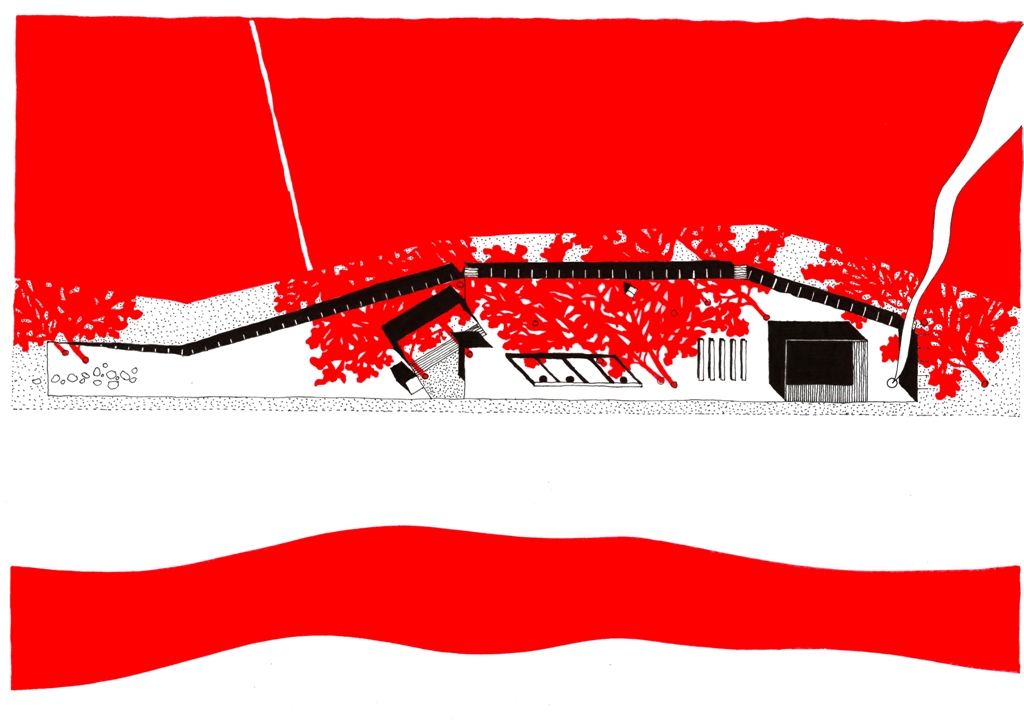Inscríbete y crea tu propia colección de obras y artículos
Parque Potemkin
Potemkin, 2003, is a park for Post Industrial Meditation by Finnish architects Casagrande & Rintala. The steel made park is founded on an illegald garbage dump by the Kamagawa River of the Kuramata village in the Nijgata Province, Japan.
Potemkin stands as a post industrial temple, the Acropolis to re-think of the connection between the modern man and nature. It is a cultivated junk yard situated between the ancient rice fields and the river with a straight axis to the Shinto temple.
The design of the park was drawn on site in 1:1 scale on snow by walking the lines with snow-shoes and then built up when the snow melted. Echigo-Tsumari region may get 3 meters of snow.
The Potemkin is an artistically articulated collage of recycled urban and industrial waste, an industrial ruin for post-industrial meditation. As one enters the park the one inch thick steel walls are on the ground level, but while proceeding further the ground is descending, while the walls keep levelled and thus become 5 metes high. The wall system is framing a set of old oak trees and a series of outdoor and indoor spaces, smaller temples and courtyards with the final focus on the river down in the valley. Kamagawa River, where one may fish an ayu-fish, grill it and eat it up in Potemkin and go home.
The steel temple Potemkin is spiritually connected to the old Shinto temple on the other side of the rice fields. The post industrial meditation park is blessed by the Shinto priest and the 120 Kuramata villagers are continuing now their 400 -year old tradition of every night circular dance in Potemkin. A community ritual memorizing a heroic act from the feudal times. All the village can sit on the small oak bench auditorium of the park.
The rice farming village of Kuramata is dying. The younger generations have moved to Nijgata, Tokyo and other cities and the traditions of hundreds of years are about to disappear very rapidly; traditions that are based on a harmonious co-existence between the man and nature - human nature as part of nature. Potemkin celebrates Local Knowledge and by providing an industrial ruin it is providing hope. Urban visitors are often sleeping in Potemkin and claim that they have slept good.
Ficha técnica
Author: Casagrande & Rintala, Finland Organizer: Echigo-Tsumari Contemporaty Art Triennial 2003, curator Sakura Iso Site: Kuramata village by the Kamagawa River, Echigo-Tsumari, Japan Dimensions: 130 m long, 5 – 15 m wide, 5 m high Materials: Kawasaki steel (one inch thick), recycled concrete, recycled asphalt, recycled glass, recycled pottery, river bed stones, white gravel, oak Team: Marco Casagrande, Sami Rintala, Edmundo Colon, Chris Constantin, Philippe Gelard, Leslie Cofresi, Marty Ross, Janne Saario, Jan-Arild Sannes, George Lovett, Dean Carman, Joakim Skajaa, Sonny Madonaldo Photos: Dean Carman
